Key Takeaways
- Location: Nestled in the southern part of England, The New Forest is easily accessible for a getaway.
- Unique Features: Its untamed beauty, diverse wildlife, and rich history make it special.
- Activities: From leisurely walks to cycling, there’s plenty to fill your day.
- Historical Significance: Named ‘new’ by William the Conqueror, it has royal hunting roots.
- Wildlife: The presence of free-roaming donkeys and ponies adds to its charm.
- Geography: Its varied landscape includes forests, heaths, and even sandy patches.
- Notable Sites: The Rufus Stone marks a significant historical event.
The New Forest, a national park located in the southern part of England, offers a blend of natural beauty, history, and adventure, making it an ideal destination for campervan and motorhome enthusiasts.
Why The New Forest Appeals to Campervan and Motorhome Travellers
The New Forest is not just a forest; it’s a living, breathing space that invites exploration and relaxation in equal measure. Its easy access from major cities, combined with a variety of campsites catering to campervans and motorhomes, makes it a top pick for a weekend getaway or a longer holiday.
Local to myself in the South of England, I’ve had many a camping trip or days out in the New Forest over the years. I’m so lucky to have The New Forest right on my doorstep!
Exploring the Landscape
What Makes The New Forest Special
Unlike any other in England, The New Forest boasts a mosaic of ancient woodlands, heather-clad heaths, and grassy plains. It was named ‘new’ over a thousand years ago by William the Conqueror, who designated it a royal hunting preserve. Today, it’s the free-roaming animals – ponies, cattle, donkeys, and even pigs during the pannage season – that capture visitors’ imaginations.
A Day in The New Forest
Starting with a sunrise walk among ancient oaks, followed by a leisurely cycle ride on the many flat trails, and perhaps ending with a sunset picnic by one of its many streams, a day in The New Forest can be as relaxed or as active as you wish.
Historical Echoes and Natural Wonders
The Royal Connection

King William I, known as William the Conqueror, favoured The New Forest for royal hunts. This historical significance is marked by the Rufus Stone, which commemorates the spot where William II, or Rufus, was fatally wounded. The forest’s royal hunting legacy is a tapestry woven through its very essence.
Wildlife and Free-roaming Animals
The sight of donkeys ambling through village streets or ponies grazing beside ancient woodland paths adds a magical quality to The New Forest. These animals are integral to maintaining the open heathland landscape, and their right to roam freely dates back centuries.
The Sandy Surprises

While primarily known for its woodlands and heaths, The New Forest also features patches of sand, especially near its coastline. These sandy expanses offer a surprising contrast to the lush greenery and are a reminder of the forest’s geological diversity. Examples of sandy beaches found in the New Forest National Park include Mudeford Sand Spit, Lepe Beach in Lymington and the Hurst Castle Spit.
What makes The New Forest So Special?
The New Forest holds a unique place in England’s landscape and heart for several reasons, making it particularly special:
- Historical Significance: Established as a royal hunting ground by William the Conqueror in 1079, The New Forest is steeped in history. Its ancient woodlands, open moors, and heathlands have been preserved for centuries, offering a glimpse into the past and a connection to England’s royal and cultural heritage.
- Biodiversity: The New Forest is home to an incredible variety of wildlife and plant species. It’s one of the few places in England where the ancient practice of commoning is still exercised, allowing animals like ponies, cattle, donkeys, and pigs to roam freely. This not only adds to the charm and character of the forest but also plays a crucial role in maintaining the health of its ecosystems.
- Unique Landscapes: Unlike many other forests, The New Forest encompasses a wide range of landscapes within its boundaries, including ancient woodlands, heather-clad heaths, grassy plains, and even coastal marshes and cliffs. This diversity offers something for every visitor, whether they’re interested in leisurely walks, wildlife spotting, cycling, or simply enjoying the tranquility of nature.
- Conservation and Access: The New Forest is a protected area, designated as a National Park in 2005. This ensures its landscapes are conserved and enhanced for future generations, while also providing access for the public to enjoy. The balance between conservation and recreation makes it a model for sustainable enjoyment of natural spaces.
- Cultural Heritage: The forest is not just a natural wonder but also a living cultural landscape. It has been shaped by centuries of grazing, forestry, and agriculture, with traditional practices continuing to this day. The New Forest also inspires artists, writers, and musicians, adding a rich cultural layer to its natural beauty.
- Recreational Opportunities: With its vast network of trails, visitor centres, historic sites, and engaging activities like horse riding, cycling, and wildlife tours, The New Forest caters to a wide range of interests and provides endless opportunities for outdoor recreation and exploration.
The combination of these factors – its rich history, biodiversity, varied landscapes, conservation efforts, cultural significance, and recreational opportunities – makes The New Forest truly special. It’s a place where history, nature, and culture intertwine, offering a unique and memorable experience for all who visit.
Camping in The New Forest

For campervan and motorhome enthusiasts, The New Forest offers a variety of sites, ranging from fully equipped facilities with electric hookups to more rustic spots that allow you to connect with nature. Below are tables highlighting some top picks for both types of sites:
Fully Equipped Campsites
| Campsite Name | Location | Features |
|---|---|---|
| Holsmley Campsite | Christchurch | Electric hookups, dog friendly, Laundry |
| Long Meadow | Brockenhurst | Wi-fi, on-site catering, showers |
| Lytton Lawn | Milford On Sea | Playground, games room, shop |
Rustic Campsites
| Campsite Name | Location | Features |
|---|---|---|
| Hollands Wood | Brockenhurst | Toilets, showers, laundry |
| Hurst View | Lymington | Random pitching, dog friendly |
| Matley Wood | Near Beaulieu | Small site, no toilets/showers, dog friendly |
Hurst View is a favourite of mine. The relaxed rules, pitch-anywhere layout and the allowance for camp fires really offers freedom. And it’s a lovely scenic walk down to the pebble beach.
Top 10 Facts About The New Forest
- Established by William the Conqueror: The New Forest was designated a royal forest by William the Conqueror in 1079, primarily for the hunting of deer. Its name, “New Forest,” reflects its status as a newly created hunting area at that time.
- A National Park: It was designated as a National Park in 2005 to recognise and protect its unique landscapes, wildlife, and cultural heritage, making it one of the UK’s youngest National Parks.
- Free-roaming Animals: The New Forest is renowned for its practice of commoning, allowing animals like ponies, cattle, donkeys, and pigs to roam freely. This tradition helps maintain the open landscape and is a key attraction for visitors.
- Rich Biodiversity: The area is a biodiversity hotspot, home to many rare species of plants and animals, including all six of Britain’s native reptiles.
- Ancient Woodlands and Trees: The forest contains some of the oldest trees in Europe, including the Knightwood Oak, which is over 500 years old, offering a window into the natural history of England.
- Historical Sites: Beyond its natural beauty, the New Forest is dotted with historical sites, including the Rufus Stone, which marks the spot where King William II supposedly met his demise during a hunting accident in 1100.
- Large Area: Covering approximately 566 square kilometers (219 square miles), it spans parts of Hampshire, Wiltshire, and Dorset, making it one of the largest remaining tracts of unenclosed pasture land, heathland, and forest in the southeastern part of England.
- Recreational Paradise: With over 140 miles of tracks and footpaths, it’s a haven for outdoor enthusiasts, offering activities like walking, cycling, horse riding, and bird watching.
- A Working Forest: It’s not just a place for recreation and wildlife; it’s also a working landscape, with forestry, farming, and conservation efforts going hand in hand to manage the land.
- Archaeological Treasure Trove: The New Forest area is rich in archaeological sites, ranging from prehistoric burial mounds and Roman roads to medieval villages, reflecting thousands of years of human activity and settlement in the region.
The Top 5 Hidden Gems of The New Forest
The New Forest is dotted with well-known attractions and landscapes, but it’s the hidden gems that can make a visit truly unforgettable. Here are five of the best lesser-known spots that offer a more secluded and unique experience:
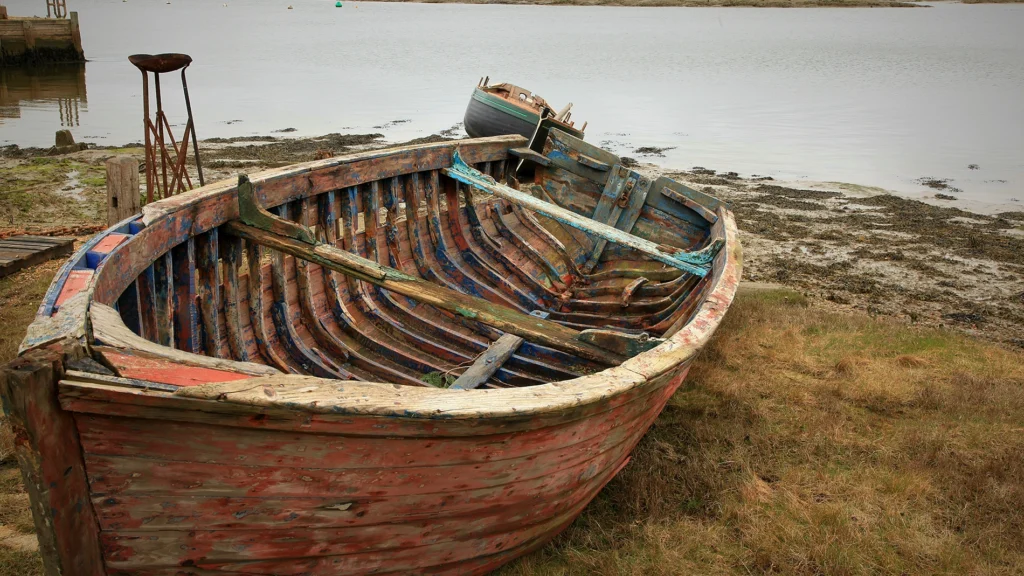
Buckler’s Hard: While not entirely unknown, Buckler’s Hard is a tranquil 18th-century shipbuilding village along the Beaulieu River, often overlooked by those heading straight for the more famous Beaulieu Motor Museum. It’s steeped in maritime history, with beautifully preserved cottages and a museum that tells the story of its shipbuilding past. The serene riverside setting makes for a peaceful walk or picnic spot.
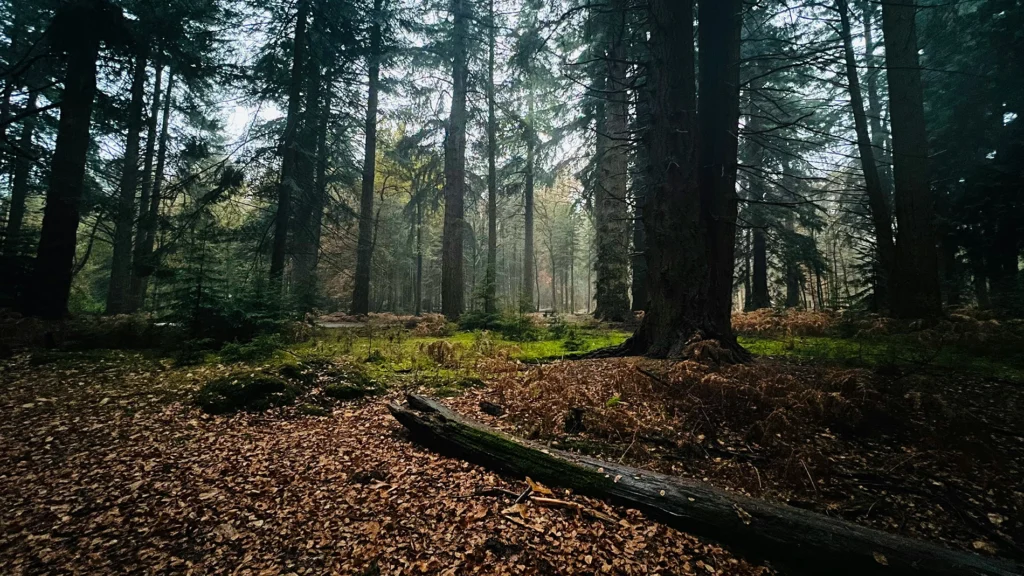
Blackwater Arboretum: Nestled deep in the forest, Blackwater Arboretum is a collection of trees from around the world, including several giant redwoods. It’s a quieter alternative to the more bustling parts of the New Forest, offering a circular, easy-access trail that winds through the arboretum and an ornamental woodland. It’s especially beautiful in autumn when the leaves change colour.

Keyhaven and Pennington Marshes: These coastal marshes provide stunning views and are a birdwatcher’s paradise, especially outside the summer months when they’re less crowded. The area is part of the New Forest National Park but lies on its coastal edge, offering a different landscape characterised by saltmarsh, lagoons, and mudflats. It’s an excellent spot for a peaceful walk or cycle, with views over to the Isle of Wight.
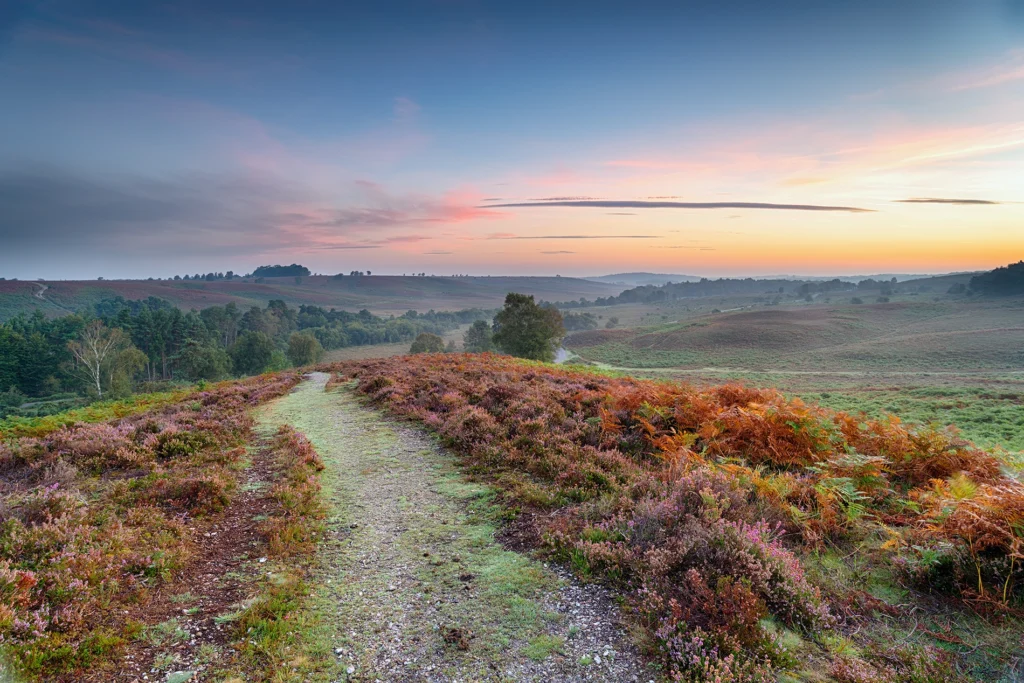
Rockford Common: A bit off the beaten path, Rockford Common offers some of the New Forest’s most striking landscapes, with heathland, mires, and ponds that attract a wide variety of wildlife. It’s a fantastic place for those looking to enjoy the tranquility of the forest, with fewer visitors and ample opportunity for birdwatching, photography, and leisurely walks.
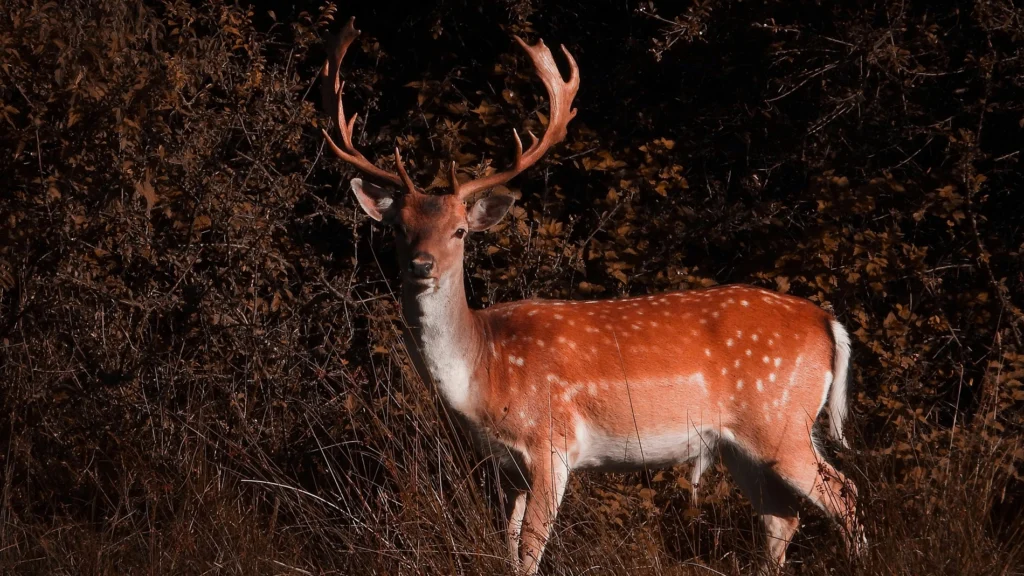
Bolderwood Deer Sanctuary: While Bolderwood is known for its deer viewing platform, the surrounding area is a hidden gem in itself, with ancient woodland and quiet trails. Early morning or late afternoon visits offer the best chance to see deer in their natural habitat, while avoiding the crowds that can gather at peak times.
Exploring these hidden gems offers a chance to see a different side of the New Forest, away from the more frequented spots. Whether you’re interested in history, wildlife, or simply the peace and quiet of nature, these locations provide a unique glimpse into the forest’s diverse beauty.
The Best Time Of Year To Visit The New Forest
The best time to visit the New Forest largely depends on what you’re looking to experience, but each season offers its unique charms and attractions:
- Spring (March to May): This is a beautiful time to see the New Forest as it wakes up from winter. The forest floor becomes carpeted with bluebells, and the trees start to green. Wildlife, including the famous New Forest ponies, are more active, and the weather is generally mild, making it ideal for walking and cycling.
- Summer (June to August): Summer is the most popular time to visit, thanks to the warmer weather and longer days. It’s perfect for exploring the forest’s heathlands and enjoying picnics. The New Forest and Hampshire County Show usually takes place in July, offering a great opportunity to experience local culture and traditions. However, being peak season, it can get quite busy.
- Autumn (September to November): Autumn transforms the forest with spectacular displays of colour as the leaves change. It’s also a fantastic time for fungi spotting, with a variety of species flourishing in the damp conditions. The cooler temperatures make it comfortable for hiking, and the less crowded paths allow for a peaceful exploration.
- Winter (December to February): While it’s the coldest season, winter has its own beauty. Frost and snow can make the landscapes enchantingly beautiful, offering a different perspective of the forest. It’s also the quietest time to visit, ideal for those looking to escape the crowds and enjoy the tranquility of the forest. Some attractions may have reduced hours or be closed, so it’s worth checking in advance.
To conclude, if you’re looking for mild weather and the chance to see the forest come to life, spring and early summer are excellent choices. For warm weather and the full range of activities, summer is ideal. For autumn colors and fungi, September and October are perfect, while winter offers quiet, scenic beauty. Ultimately, the best time to visit is when the activities you’re most interested in can be fully enjoyed.
The Famous New Forest Ponies
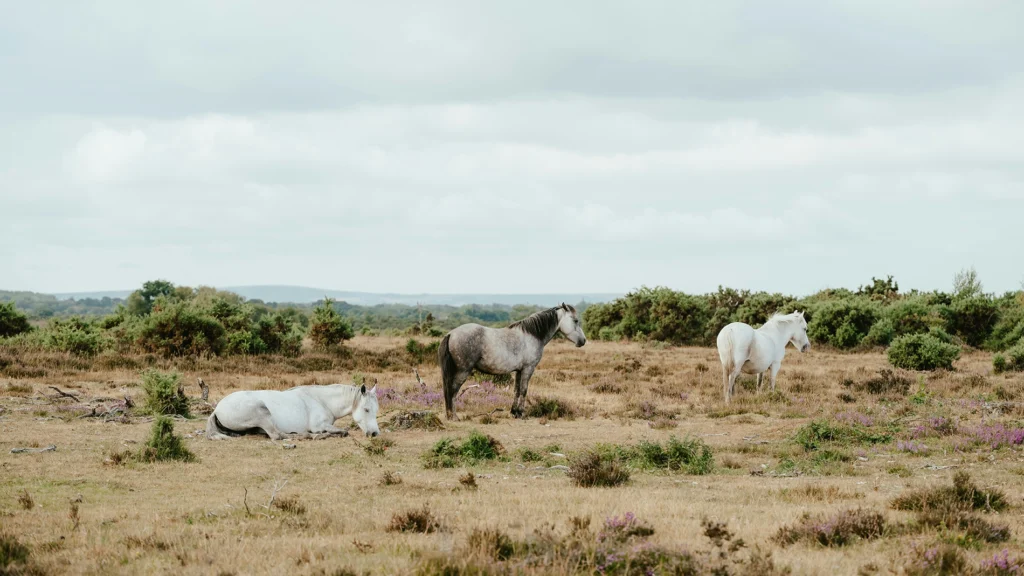
The New Forest ponies, known for roaming freely across the vast landscapes of the New Forest, are actually owned by local residents who hold commoning rights. These rights allow them to graze their livestock, including ponies, cattle, and donkeys, on the open forest land. These commoners are an integral part of the forest’s cultural heritage, maintaining the tradition that has shaped the landscape for centuries.
Releasing a pony into the New Forest is not as straightforward as it might seem. You cannot simply buy a pony and release it into the forest. To have the right to graze animals in the New Forest, you must be a commoner — that is, you need to occupy land or property that comes with commoning rights. These rights are attached to specific pieces of land within the forest’s vicinity and have been passed down through generations or sold along with properties.
In addition to owning land with commoning rights, commoners must adhere to the rules and regulations set by the Verderers of the New Forest. The Verderers are an ancient legal body that oversees commoning activities and ensures the welfare of the free-roaming animals. Among other requirements, ponies released onto the forest must be branded, microchipped, and pass a health inspection to ensure they can safely join the semi-feral herds.
If you are interested in contributing to the tradition of commoning in the New Forest, it’s essential to engage with the local commoning community and understand the responsibilities and commitments involved in maintaining the health and welfare of the ponies and the forest itself.
Making the Most of Your Visit
When visiting The New Forest in a campervan or motorhome, it’s essential to respect the environment and the local wildlife. Stick to marked trails, keep a safe distance from the animals, and always leave no trace of your stay.
Final Thoughts
The New Forest is not just a destination; it’s an experience. Its blend of natural beauty, historical depth, and friendly locals makes it a perfect getaway for campervan and motorhome travelers. Whether you’re seeking adventure, tranquility, or a bit of both, The New Forest welcomes you to discover its secrets at your own pace.
